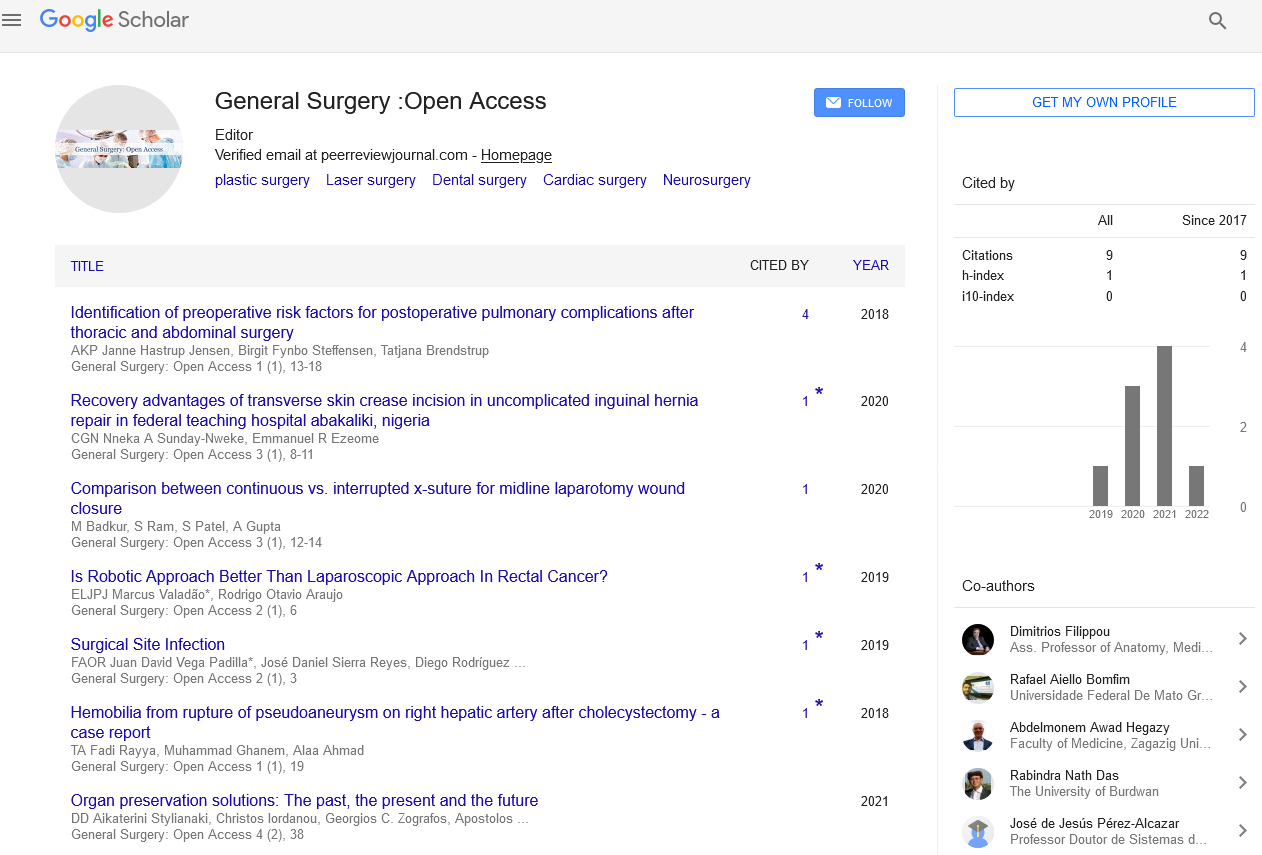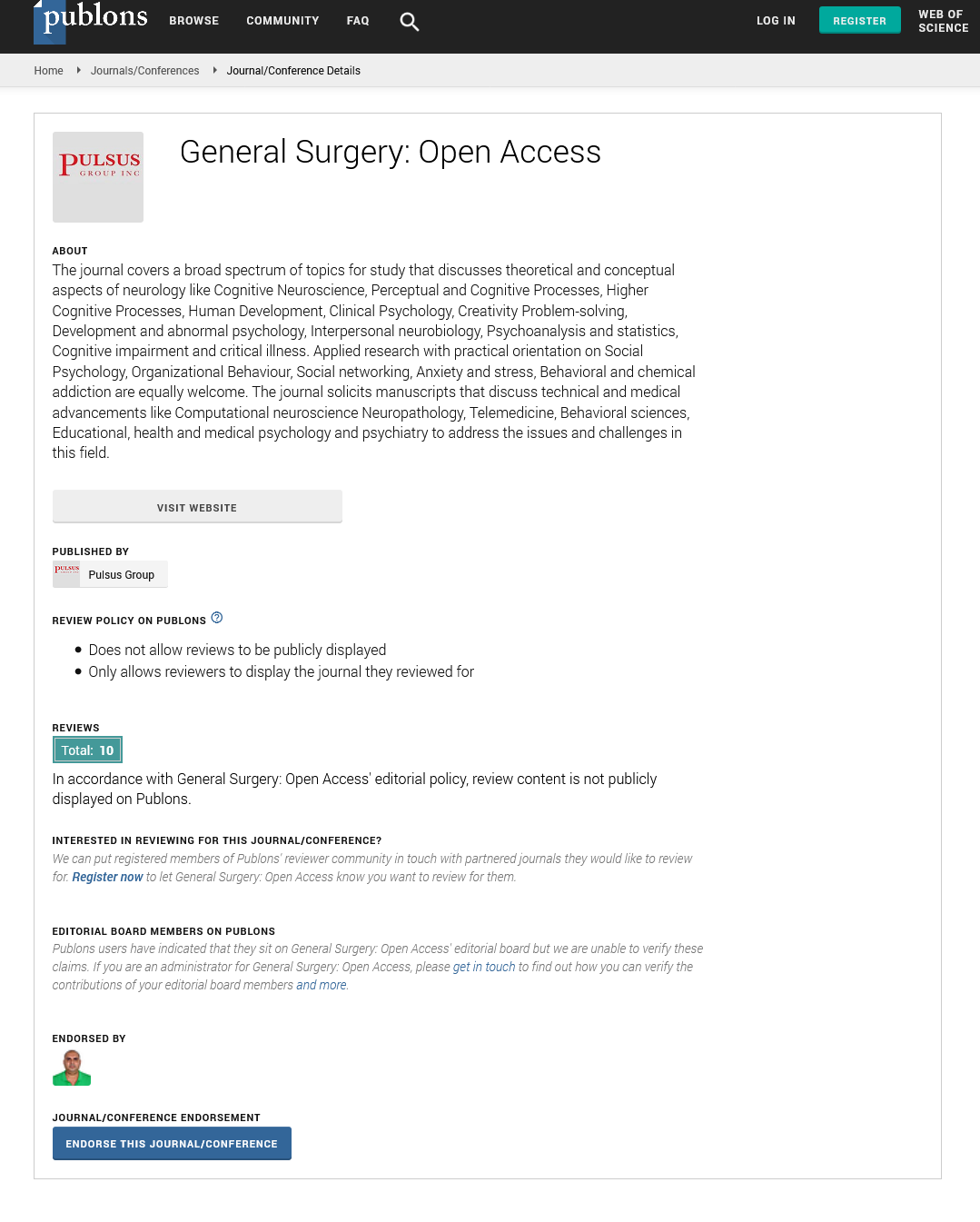Idiopathic Osteonecrosis of the Femoral Head
Received: 03-Dec-2021, Manuscript No. PULGSOA-22; Editor assigned: 08-Jan-2022, Pre QC No. PULGSOA-22(PQ); Accepted Date: Jan 05, 2022; QC No. PULGSOA-22(QC); , Manuscript No. PULGSOA-22(R); Published: 14-Jan-2022, DOI: 10.37532/pulgsoa.2022.5(1)-01
This open-access article is distributed under the terms of the Creative Commons Attribution Non-Commercial License (CC BY-NC) (http://creativecommons.org/licenses/by-nc/4.0/), which permits reuse, distribution and reproduction of the article, provided that the original work is properly cited and the reuse is restricted to noncommercial purposes. For commercial reuse, contact reprints@pulsus.com
Abstract
The case report we present concerns a 65-year-old male patient with idiopathic osteonecrosis of the left femoral head. After repeated cycles without the significant success of physiotherapy treatments, due to the worsening of the painful symptoms in the left coxo-femoral site with increasing functional limitation, it was decided to proceed with decompression surgery of the femoral head using a cannulated biological screw which due to its intrinsic structural characteristics, allowed the simultaneous application in the neck and femoral head of PRP growth factors prepared at the time of surgery. The clinical picture surprisingly regressed in a very short time with a complete functional recovery in the absence of significant pain. The MRI examination performed before the treatment in place, compared with a similar examination after 5 months, shows sub-total remission of the signal affecting the trabecular structure of the cephalic portion of the femur in line with the clinical picture just reported.
Introduction
Although the pathophysiology of nontraumatic femoral head osteonecrosis is unknown, changes in intramedullary circulation are thought to be involved. With intramedullary venography, Ficat and Arlet and Ficat discovered that rapid c learance of contrast medium by efferent vessels occurs in the normal hip, but reflux into the diaphysis causes intramedullary stasis in hips with femoral head osteonecrosis. Dynamic contrastenhanced MRI (DCEMRI) has been utilised to measure blood flow in bone marrow in vivo. The majority of investigations have employed an animal posttraumatic model of induced osteonecrosis of the femoral head. In human subjects, First found that individuals with systemic lupus erythematosus had more enhancement in the femoral head but less enhancement in the femoral neck than healthy people.
The first documented delayed peak enhancement in hips with acute bone marrow edoema 40–65 seconds after a first run of gadoliniumbased contrast agent; pharmacokinetic modelling revealed comparable findings. Using DCE-MRI, this study intends to link intramedullary blood perfusion of the proximal femur to the severity of femoral head osteonecrosis. We hypothesised that blood flow stasis occurs in the proximal femur during the early stages of femoral head osteonecrosis due to perfusion reflux into the diaphysis; second, that as the severity of femoral head osteonecrosis increases, blood perfusion increases in the femoral head due to increasing granulation tissue; and finally, that these perfusion changes can be evaluated with DCE-MRI.
Conclusion
As shown by DCE-MRI, intramedullary peak enhancement increased in the femoral head with the advancement of idiopathic femoral head osteonecrosis, whereas there was delayed peak enhancement in the femoral head in grade 0 hips and intertrochanteric stasis in advanced femoral head osteonecrosis. In the absence of additional MRI abnormalities, such perfusion alterations as seen on MRI can occur with early osteonecrosis. Reduced bone marrow perfusion has been linked to aging and fatty marrow. According to MRI, hips with femoral head osteonecrosis contain primarily fatty marrow in the intertrochanteric area of the femur. Fat content has an inverse relationship with marrow perfusion.






